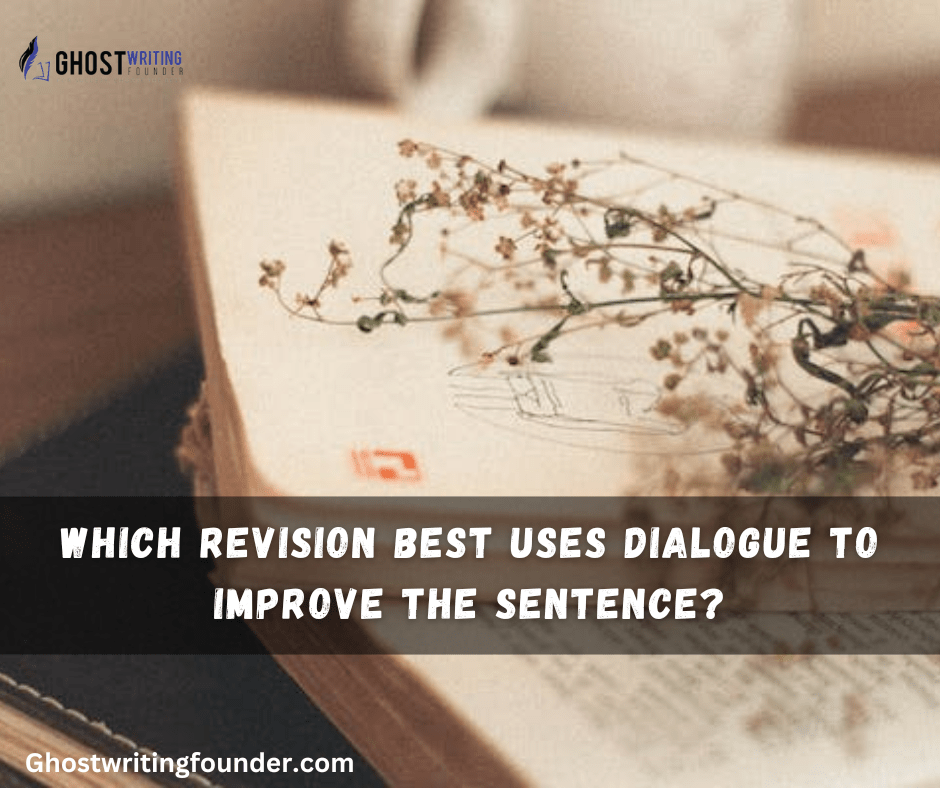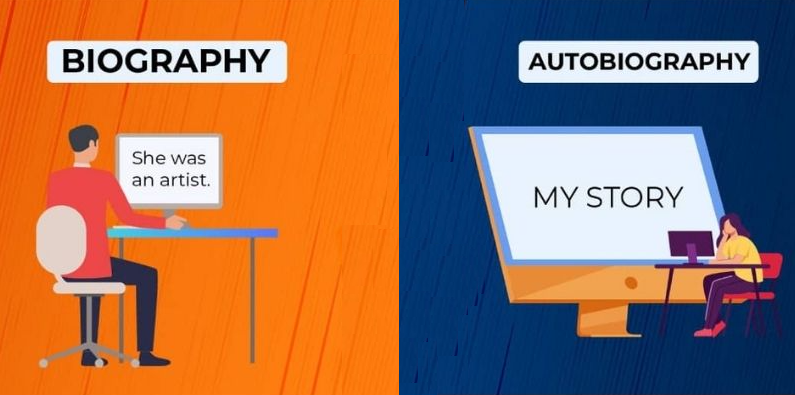
Writing
Dialogue Revision is one of the most important tools a writer can use. It can turn a simple line into a lively exchange between characters. Dialogue is used well and gives information and a story depth, reality, and entertainment value. In this piece, we’ll look at how dialogue can improve sentences and give examples of changes that show how it works.
Importance of dialogue in writing
Dialogue is one of the most important aspects of writing, and understanding the Difference Between Fiction and Non-Fiction Writing can further enhance dialogue effectiveness. It allows the reader to connect with the characters and helps establish their personalities, attitudes and emotions. It can also reveal plot points and foreshadow upcoming events.
The best way to write dialogue is to listen to real people talking, much like the approach recommended in How to Become a Novelist. How people speak in real life often differs greatly from speaking in books or movies. If you want your dialogue to sound natural, pay attention to how people talk and write down what they say. Good dialogue is an essential factor for book marketing, as explored in our guide on 30 Book Marketing Ideas for Skyrocketing Sales.
Dialogue should always be purposeful, moving the story along or revealing something about a character’s personality or actions. It should never be used simply as a filler between two sentences.
Dialogue Revision Techniques for Using Dialogue Effectively
Writers can use different ways to revise dialogue to get the most out of it. By thinking about following things, dialogue can be a powerful way to improve the quality of writing:
Incorporating character voice and personality
Each character should have a unique style and personality in their conversations. By choosing their words, sentence patterns, and expressions carefully, writers can make sure that readers can tell each character apart and connect with them on their own level.
Adding depth and realism to conversations
Conversations in real life are often full of stops, interruptions, hesitations, and hints. Adding these things to the conversation can make it more real and interesting. By using these small details, writers can give their stories a sense of reality that readers can relate to. This process can be done when the editor is doing book proofreading, a service expertly handled by our Book Editing Services.
Conveying information subtly through dialogue
Dialog is a good way to get information across without leaning too much on exposition. By using subtext, implications, and hints, writers can share details about the plot, similar to the techniques discussed in 8 Tips for Writing Short Film Scripts That Connect. the relationships between characters, or events that happened in the past without being too obvious. This gives the story more depth and intrigue.
Enhancing pacing and flow
Dialogue can also be a strong way to change how a story moves and how fast it moves. Mixing action and conversation can give the story a sense of urgency, as effectively demonstrated in Best Non-Fiction Adventure Books. and move it along. Writers can change the pace of a story and keep a reader’s attention by changing the length and rhythm of conversations.
Examples of effective dialogue revisions
To illustrate the impact of dialogue revisions, let’s explore some examples that showcase its versatility and storytelling potential:
Showcasing character emotions
Original: “I can’t believe you did that,” Sarah said angrily.
Dialogue revision: Sarah’s face flushed, her voice quivering. “I can’t believe you did that.”
In this revision, the character’s anger is shown through her physical and emotional reactions, creating a more attractive and immersive experience for the reader.
Creating tension and conflict
Original: “You never listen to me,” he said.
Revision: “You never listen to me,” he said, his voice rising. “Do you even care about my opinion?”
By increasing the tension and conflict within the dialogue, this revision adds depth to the conversation, reflecting the growing animosity between the characters.
Revealing backstory and motivations
Original: “I can’t come to the party,” Mark said.
Revision: Mark hesitated, his eyes darting away. “I can’t come to the party. It’s the anniversary of my father’s death.”
The character’s reluctance is explained in this revised dialogue, introducing a deeper layer of emotional significance and providing insight into their motivations.
Advancing the plot
Original: “We should leave,” she said.
Revision: “We should leave,” she said, glancing at her watch. “The train departs in ten minutes.”
By adding a time constraint, this revision introduces a sense of urgency and propels the plot forward, creating anticipation and driving the characters’ actions.
Common pitfalls to avoid when using dialogue
While dialogue can enhance writing, it is essential to be aware of potential pitfalls that may diminish its effectiveness:
Overusing dialogue tags and adverbs
A lot of conversation tags (like “he said” and “she said”) and adverbs (like “angry” and “happy”) can be confusing and unnecessary. Writers should be clear and let the characters’ emotions and goals come through in the dialogue, a skill that can be honed with our Content Development Services.
Using unrealistic or excessive dialogue
Dialogue should be like how people talk to keep things real. Too formal or wordy conversation can feel fake, and too much dialogue without balance in the story can overwhelm readers. Dialogue works best when people find a middle ground, a concept further explored in Speech Writing and Types of Speeches.
Neglecting narrative balance
To create a balanced viewing experience, dialogue should be mixed with story elements, descriptions, and action. If you don’t focus on these things, you might end up with scenes with a lot of conversation that don’t make sense and don’t pull the reader in.
Failing to maintain consistent character voices
Each character’s dialogue should be consistent with their personality, background, and speech patterns. Inconsistencies in language or tone can confuse readers and detract from the overall believability of the story.
Tips for editing and polishing dialogue revision
To ensure that dialogue is effective and engaging, writers should consider the following tips during the editing and polishing process:
Reading conversation out loud helps you find awkward wording, problems with the pace, or dialogue that just doesn’t sound right. It lets writers figure out how the conversation goes and if it sounds real.
Dialogue should be clear and to the point. It shouldn’t go off on tangents or be too long. Each line should have a purpose and help the scene move forward, or the character grow.
The dialogue should sound like how people talk in real life, using the right idioms, slang, or accents for the character. But it’s important to find a good mix and not use too much slang, making readers uncomfortable or confused.
Getting feedback from others can teach you much about how well conversation works. Ghostwriting founder can help you by giving feedback and making your story fascinating using services like SEO Blog Writing Services. Beta readers or editors can help you find places where dialogue could be better or give you ideas on making it more powerful. Ghostwriting Founder can help you by giving feedback and making your story fascinating using services.
Essential Elements and Detailed Insights
| Aspect of Dialogue Writing | Impact on Storytelling | Practical Tips for Writers |
|---|---|---|
| Character Voice and Personality | Distinguishes characters and adds depth. | Create unique speech patterns and expressions for each character. |
| Realism in Conversations | Makes dialogue more believable and relatable. | Include natural speech elements like pauses and hesitations. |
| Information Conveyance | Subtly shares plot and character details. | Use subtext and implications in dialogue to reveal story elements. |
| Pacing and Flow | Affects the narrative’s rhythm and urgency. | Mix dialogue with action to vary the pace and maintain engagement. |
| Emotional Depth | Reveals characters’ emotions and motivations. | Show emotions through dialogue delivery and reactions, not just words. |
| Conflict and Tension | Builds drama and engages the reader. | Use dialogue to create misunderstandings, disagreements, or suspense. |
| Backstory Integration | Provides context and enriches character development. | Use dialogue to subtly reveal characters’ pasts and motivations. |
Conclusion
Dialogue is a strong tool that, when used well, can turn simple sentences into lively, interesting exchanges between characters. Writers can improve their stories by giving characters’ voices, giving them depth and reality, and using dialogue to give information and make the story flow better. But it is vital to be aware of common mistakes and carefully edit the speech to ensure it’s clear, balanced, and consistent. By learning to dialogue revision well, writers can bring their stories to life and hook their readers.









Leave a Reply